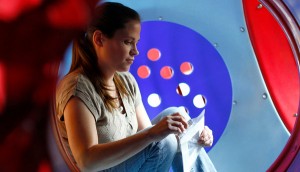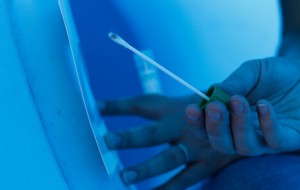When you go into a typical fast food restaurant, you see workers busily cleaning the tables and washing the floors to make sure everything are sanitized. However, do you ever ponder how often and how well they clean the children’s playgrounds in the restaurant?
Dr.Erin Carr-Jordan, a child development professor and a mother of four children from Arizona, has visited dozens of restaurant playgrounds in 11 states and over 50 restaurants, such as McDonald’s, Burger King and Peter Piper Pizza, to test them for cleanliness. After taking samples from each playground, she sent the specimen Legend Techincal Services Inc., which is a commercial laboratory that analyses the types of bacteria or pathogens present.

The results were even more shocking than the horrible physical conditions of the playgrounds. Not only were some playgrounds covered with filth and contamination, it was full of harmful microorganisms. The lab analyses have shown a widespread of presence of pathogens. Two strains of bacteria called Streptococcus pneumoniae was found, which causes meningitis. There are two forms of Meningitis, viral and bacterial, and bacterial meningitis is more serious since it can cause severe disease that can result in brain damage and even death.
In addition, the results revealed four strains of Staphylococcus, which is a group of bacteria that can cause a multitude of diseases as a result of infection in various tissues of the body. Over 30 different types of Staphylococcus can infect
humans, but most common one is Staphylococcus aureus. It causes Staphylococcal infection, which can progress to crusting or inflammation of the skin. If the bacteria enter the bloodstream, and spread to other organs, a number of serious infections can occur. Staphylococcal pneumonia can affect the lung and lead to abscess formation within the lungs. The infections are contagious and can be transmitted from person to person. Since children, who have weaker immune system, are the ones who use playgrounds, it is appalling to see how contaminated these places are.
Although Dr.Carr-Jordan has a Ph.D. in developmental psychology, she is not an expert in microbiology. Therefore, Philip M. Tierno Jr., director of clinical microbiology and immunology at NYU Langone Medical Center in New York has surveyed Dr. Carr-Jordan’s results to authenticate her claims. He strongly agrees with her by saying “There are very high counts, and that means these places are not cleaned properly or not cleaned at all.”
This is an excellent example of how scientific testing is used to in our daily lives to improve the public facilities. I wish the article covering the story in the New York times would have explained the procedures of the analyses so the public learns what happens when specimens enters the laboratories. Nonetheless, Dr.Carr-Jordan’s efforts in fighting the fast food restaurants for cleaner playground has been successful due to her evidence found in scientific analyses. Now the ugly truth has surfaced, it is time for all fast food restaurants to make the efforts to make the playground a safer and healthier place for children to play in.
VIDEO


3 replies on “The Ugly Truth of Fast-Food Playlands”
This post is a great platform for a couple really interesting issues. Instead of including details on the types of analyses used right in the article, I like it when articles link to the original paper so that those who want more details can get it. [Provided, of course, the original research is open access, which is another issue altogether.] A senior science student at UBC might want further info, but always keep your audience top of mind. Would the average NY Times reader care? Before further details on the tests used, I would have liked to see something about our obsession with cleanliness and its effect on our immune systems. I’m surprised the Times ran the story without this. Sure the bacteria were there, but was anyone actually getting sick?
This is really shocking considering kids are so playful and have bruises all the time. If the bacteria can enter the bloodstream through their bruises, this will be a major problem. It is really the ugly truth of these playlands.
I wonder how these results would be different if Dr. Carr-Jordan had sampled each play area multiple times.